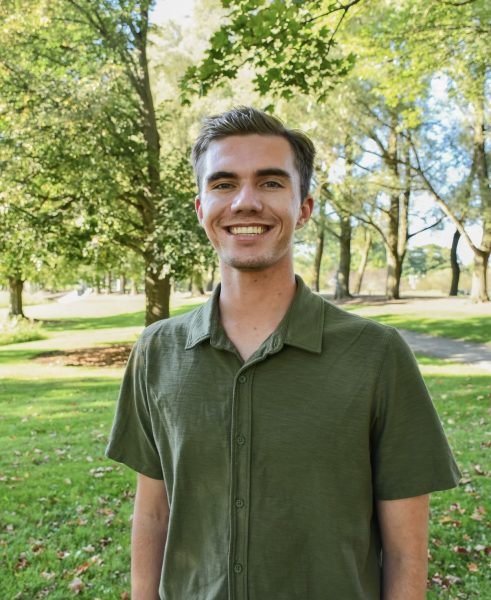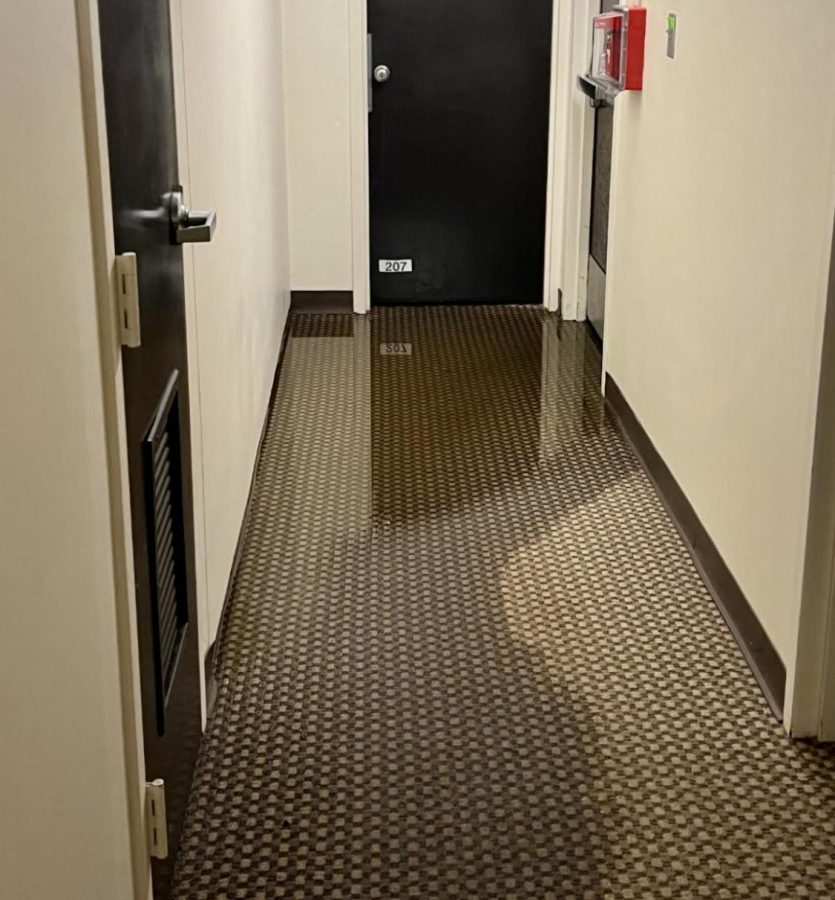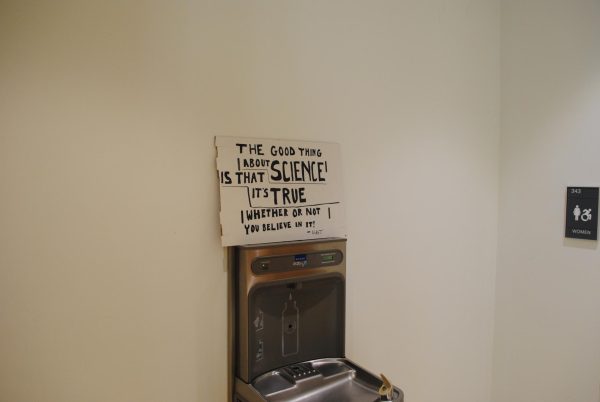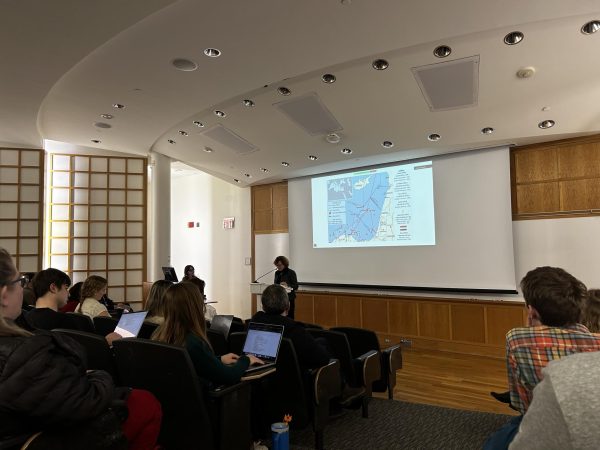Sprinkler Pipe Malfunctions Prompt Flooding, Temporary Relocation for Some 113 Broad Street Complex Residents
Extreme cold temperatures last weekend caused a sprinkler to burst in the 113 Broad Street Complex on Sunday, Feb. 5, flooding hallways and student residences in Whitnall House. In light of electrical safety concerns, affected students were evacuated and temporarily housed in local hotels until the westernmost wing was deemed safe on Monday afternoon.
According to University Director of Fire Safety Gary Bridge, the University received a water flow alarm for the underclassmen residential building shortly before 5:30 p.m. that automatically mobilized the Hamilton Fire Department and Colgate University Campus Safety. Once it was determined that the sprinkler was not activated in response to an emergency, the water supply was shut off.
Bridge explained that the cause of the sprinkler was the lasting effect of the extreme weather conditions in Hamilton over the weekend, with overnight lows between Friday and Saturday between -14º F and -20º F.
“What happened was that a sprinkler head froze, and when it freezes, the ice actually holds the water inside,” Bridge said. “When it thaws, that is when the water comes out. So, it was not the actual freeze that activated the sprinkler, but when it thawed out.”
Fire alarms sounded throughout all four houses and the central core of 113 Broad Street, directing students to exit the building. As residents of Whitnall House did, they encountered “water coming in everywhere,” sophomore and Whitnall resident Diya Mehta said. When Mehta returned to her room, she assessed the water damage.
“The hall that’s right outside of my room was very wet,” she said. “There was water coming out everywhere. I went to check my room, and my room was fine but my suitemate’s room had some water coming in so a lot of the stuff under her bed got wet. Then our bathroom light started leaking water so we put a trash can underneath to contain it.”
Some students reported that the water was brown and had a smell, but Bridge said this is normal for sprinkler systems as old as those in Whitnall House.
“So anytime a sprinkler activates, it is stagnant, dirty water [coming out]. It’s in the sprinklers, [and] probably as old as the buildings, so 30 to 40 years old,” Bridge said. “The water has been drained once a year when we test, but when it sits in the pipes, the pipes start to rust so it gets that [tinge of] brown color and an odor to it. That’s very common for sprinkler activations.”
The sprinkler — located in the westernmost stairwell of Whitnall House — sent water into hallways and rooms on the west side of the building, particularly rooms 107, 207, and 307, according to Bridge.
“So when the water hit the stairs, there’s just a slight slope, so the water went into the hallway and kind of went into those rooms,” Bridge said. “[Room] 307 wasn’t terrible. The floor was wet, but then the rooms below… once the water got into 307 and 207, it dropped down through the ceiling and started getting things wet below. So the farther down you went, the worse that got.”
Sophomore Nikhil Bahal lives in room 308.
“I certainly wasn’t happy when I came back into my room after the evacuation and found that it was flooded,” he said. “While my room contained around 2 inches of water, luckily nothing was destroyed.”
Because water was leaking through ceilings and light fixtures, the University and Hamilton Fire Department were concerned about the electrical safety of the building. These concerns led the Hamilton Fire Department to ask that all affected students be temporarily relocated while the risk was assessed and the leak repaired.
According to Bridge, just over 50 students’ residences were affected.
As soon as campus emergency response staff learned that residents of the Whitnall needed to evacuate, they activated the Emergency Operations Center (EOC) which secured rooms for students at Hotel One75 and vans to transport them there.
“[Campus Safety] officers were telling us ‘Oh, you might have to stay somewhere else tonight. Pack some stuff,’” Mehta said. “Then, they were calling [the Office of Residential Life] to put us on an email list so we knew where to go when they decided what was going on. Then, relatively quickly — maybe half an hour later — they told us to pack and they started bringing vans and taking us to Hotel One75. Within an hour we were at the hotel. ”
But initial confusion led some affected residents to pursue other plans for the night, Mehta said.
“We were just unsure where we were going to end up, so I think that’s why a lot of people ended up booking rooms in the Colgate Inn or staying with their friends up the hill,” she said. “[Campus Safety officers] just said ‘We’ll make sure you guys get somewhere, we just don’t know where yet.’ So, a lot of people panicked and found their own place to stay, but they provided us a place to stay in the end.”
Sophomore Robbie Jacobs was one such student who opted to not go to Hotel One75.
“I stayed in my friend’s suite in another tower of 113 Broad Street because I thought that would be more convenient than going far away and having to deal with the cruiser,” Jacobs.
While students spent the night elsewhere, Bridge said the University Facilities Department worked throughout the night to ensure Whitnall House was safe and clean.
“They had sucked up a lot of the water. We ran dehumidifiers. The electricians were in the following morning, [they] replaced all the electrical components that were wet, so any light fixtures or detectors or outlets they tore apart and replaced,” Bridge said. “The sprinkler was fixed. And at that point, we had every reason to let students back in.”
Shortly at 1:30 p.m. on Monday, Feb. 6, Community Leaders informed students that they could return to their rooms in Whitnall House after 5 p.m. that evening. Students, should they have chosen to, were able to remain staying at Hotel One75 for the additional night.
Bridge said that the University Department of Environmental Health and Safety (EHS) is continuing to monitor the water damage.
“EHS is continuing to take moisture readings in the area. Whenever there’s water, the next step is we want to make sure there’s no mold,” Bridge said. “So we’re following up with that and making sure that all the steps are taken that we avoid that.”
Both Mehta and Bahal applauded the quick response of the University.
“For how quickly things happened and for how quickly they had to move everyone out, I think they did a good job,” Mehta said.
Bridge echoed Mehta’s sentiments, acknowledging not only the emergency response teams but the students for their cooperation as well.
“The response from the campus was quick and efficient. The EOC pulled together [and] got plans in place very quickly,” he said. “Things went very smooth. Everybody from custodial staff…to plumbers coming in to fix the sprinkler — went as good as they could. So a special thank you to everybody who responded.”

Josie Rozzelle is a senior from San Francisco, CA concentrating in political science with a minor in French. She has previously served as multimedia manager,...

Ryan Dugdale is a senior from Los Angeles, Calif., concentrating in political science and psychology. He has previously served as an Editor, Assistant...









